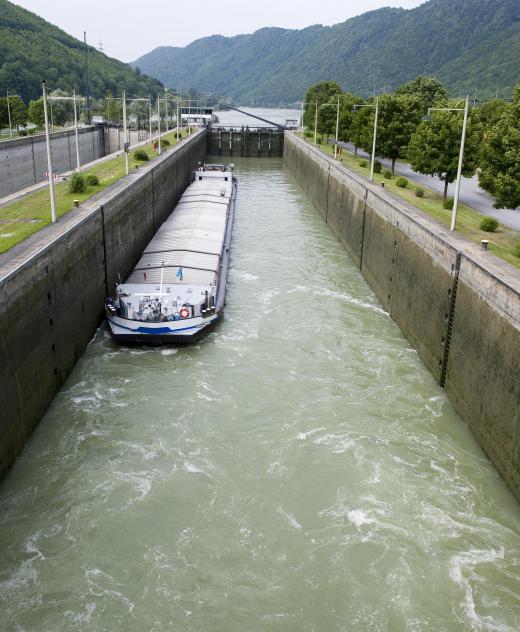What Is an Embankment?
An embankment is an artificial barrier that is designed to hold back water or to support a roadway, railway, or canal. These man-made mounds mainly consist of stones, rocks, and earth. Most have sloping sides, much like small hills, and they're typically longer then they are tall. They can come in a range of sizes; some, like those supporting creeks or irrigation ditches, are small, whereas those creating stability for major canals and the ships coursing through them tend to be quite large. While these barriers no matter their size can help steady and support their surroundings, they aren’t usually immune from environmental impacts. They’re often particularly vulnerable to structural stress, for instance, and need to be regularly monitored for stability. Things like cracks and weak spots usually need to be repaired right away. When the structures fail, the communities that depend on them often suffer, sometimes very seriously.
Water Retention

One of the main purposes of these sorts of structures is to hold back water in order to prevent flooding from seas, lakes, or rivers onto adjacent land. In many cases they provide protection to lower-lying grounds by acting as a levee as well. The barrier helps to confine the movement of water by allowing it to flow faster and higher without overflowing, and also allows for at least some manipulation when it comes to where and how much water is coursing at any given time.
Transportation Uses

A related, albeit different, purpose is to aid in transportation. A transportation embankment isn’t necessarily related to water, though it can be. Some of the most popular urban examples surround roadways that have been carved out of hills and prevent the land from shifting and sliding, making travel much safer. This sort of structure can also be used to support lowlands, such as valleys, that may need to be crossed.
Some of the most common water-based examples occur in canals and locks, where boats need safe passage but the surrounding shore is unpredictable. Fixed barriers often work to keep the water levels more or less even in heavily-trafficked areas like commercial docks, too.
Materials and Creation
Most embankments are built so as to be immune to surface erosion, and their core components usually help to prevent deterioration. These hill-like structures are filled in a variety of ways. The makeup generally varies according to what it will be used for.
In most instances, these sloping walls are either earth- or rock-filled. An earth-filled barrier usually is the simpler of the two, consisting mainly of earth and natural materials. Rock-filled alternatives are frequently made up of more granular components like rocks, stones, and other fragmented particles. Rock-filled mounds usually are more ideal to cover wider areas, and may be better in sea wall settings.
Impacts of Stress
Even though they are built to withstand intensity, these structures can become stressed. The stress of water can increase the overall depth, therefore altering the structure’s durability. Prior to building, it is usually really important for designers and engineers to calculate the maximum stress level that can be withstood. This is necessary to ensure the break-level of the bank is not surpassed by its stress capacity.
Disaster Prevention
Any misconfiguration when building an embankment could lead to overflowing. The overflowing of a water barrier, such as a levee, can lead to a disastrous situation for the surrounding land and any communities situated there. The massive flooding in New Orleans brought about by Hurricane Katrina in late August 2005 was the result of failed levees. Such failures can happen when the water pressure caused by overflowing currents begins to erode the stabilizing walls. Preventing this sort of large-scale disaster requires the coordination of many moving pieces, but proper initial planning and regular monitoring of water retention systems is usually a very important piece.
AS FEATURED ON:
AS FEATURED ON:












Discussion Comments
I take an Amtrak train between two cities fairly often. I've noticed all the areas where the tracks need an embankment support.
Back in the days when the system of railroads was being put it, just think of the work and manpower that was needed, first to build the embankment support and then lay the tracks. They went clear across the country and up and down the coasts. It would have provided jobs for a lot of people for some time.
When constructing an embankment, especially those that hold back water, it takes more than piling up a bunch of dirt and rocks. Good engineers are needed to determine the dimensions needed for the embankment so the chances of it overflowing are lessened.
I look at some of the embankments around my area, and wonder how they would stand up in some extreme weather event. In hurricane areas, good engineering is even more important.
I often think of the struggle that the Dutch had with their dikes and levees trying to keep the waters back. I always think about the story of the little boy putting his finger in a leak trying to stop a flood.
Post your comments